Long haired Dachshund dogs are loyal, protective little dogs with long wavy coats. And they have less health problems than their short haired cousins! They
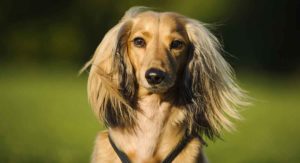
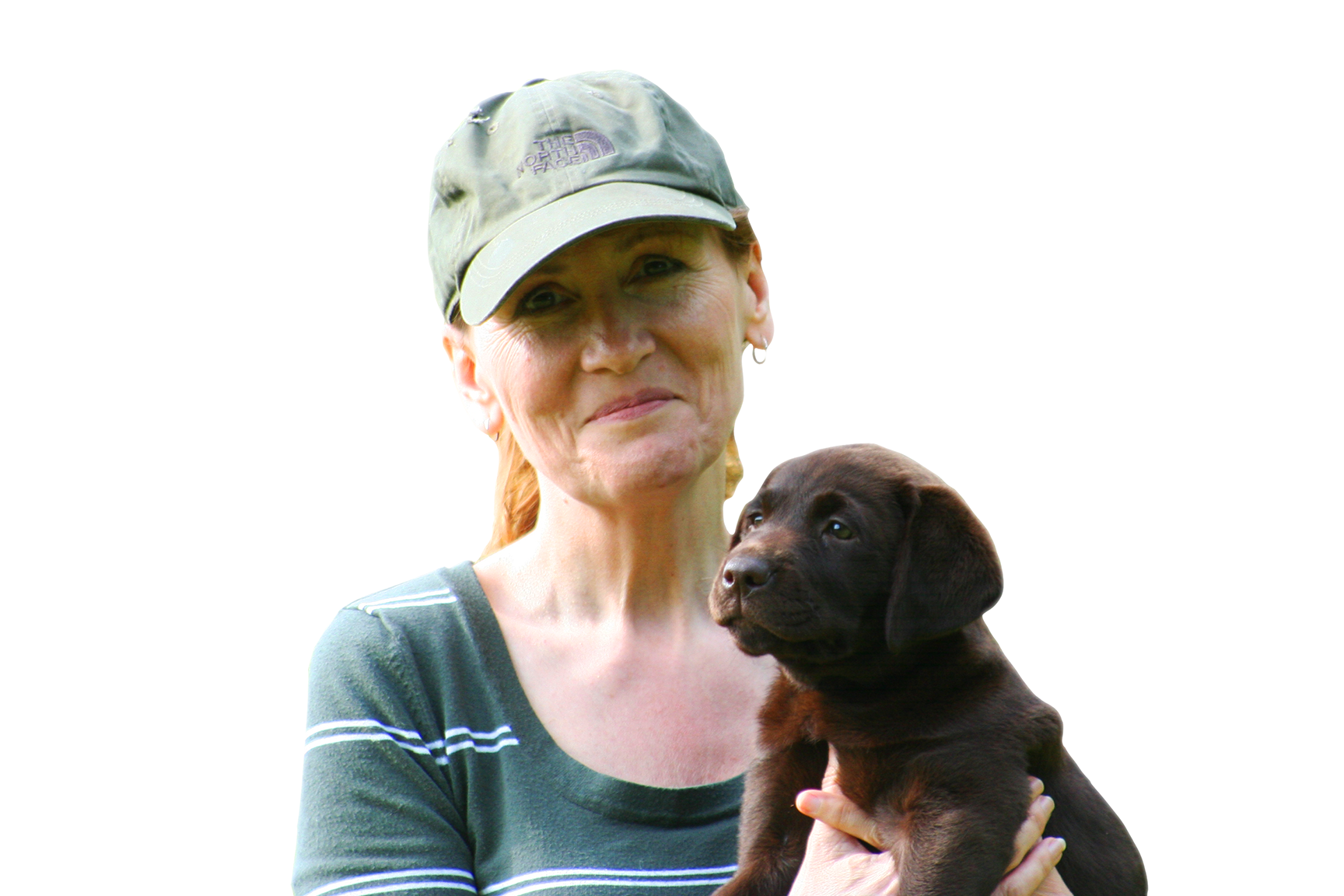
Grooming is one of those aspects of dog care that people tend to love or hate. For many short coated dogs, it doesn't matter too much if grooming is not something you want to spend much time on. Whereas for some breeds, grooming is much more than just cosmetic. It’s a health issue.
While not all puppies need regular grooming, a good grooming routine has some great benefits for all dogs and their families.
For some types of dog, daily grooming is essential unless the dog's coat is clipped short. This includes dogs with curly coats such as Poodles, and dogs with very long hair like the Shih Tzu.
But there are also many breeds with medium length coats that need grooming several times a week. Including the popular Golden Retriever and German Shepherd Dog.
Of my own dogs: Labradors, Spaniels, and Terriers, it’s the Spaniels that need the most grooming. If I fail to comb out the longer hair on their legs and ears, the first matted areas appear within just a few days.
Although matted fur is not an issue for my Labs and Jack Russell Terrier, I teach all my puppies to be comfortable with being groomed, and here’s why
Grooming is not something you can do with your dog at arm's length. You need to be up close and personal with your pooch. And it's this hands-on component of grooming which is so important for puppies of every breed or type.
Daily handling is a bonding experience that dogs appreciate and enjoy. It also ensures that health issues, such as cuts, ticks, and lumps etc, are caught early and treated.
Grooming teaches a puppy to be handled and touched over the whole of their body. This is important because all dogs need to be examined from time to time by health professionals, and because confidence in human touch lies at the heart of a safe and friendly canine companion.
For the longer coated dog, remember that grooming prevents matting. And matting has a habit of getting out of hand. In extreme case mats can cover a dog's eyes, and bottom, interfering with their ability to eliminate waste and keep themselves clean. Every rescue society and animal shelter has seen dogs in this condition.
Unless you want to achieve a specific 'look' on a long coated or curly coated breed, grooming isn't complicated.
On longer coated dogs you'll need to start with combing out knots and tangles. Tangle hotspots can be found underneath the ears, in the armpits, in the groin and in the 'trousers' beneath the dog’ bottom.
If the fur under the ears has started to mat, or form dense clumps, you may need to remove these with some scissors or a mat splitter. Always get someone to help you with this as a wriggling puppy and sharp scissors are not a good combination.
Once the tangles are out, you can give the puppy's coat a good brushing. A wide short-bristled brush (I use a horse body brush) is easy to hold onto, gives your dog a massage and gets any remaining dust and debris from the coat. Most dogs enjoy this immensely once they are used to it.
Once your puppy has their adult coat, you might want to go over the coat once a week with a rake or similar tool to remove excess undercoat.
In fact, the trickiest part of grooming is not wielding your grooming tools correctly, it's teaching the dog to stand still and relax. That's where your handling skills come in.
Standing still while a person pokes you does not come naturally to most puppies. So you will need to teach your puppy to relax while you handle them. And you can start this training from the very first day you bring your puppy home.
There are four stages to this process. Each daily practice should take no more than a minute or two. Move on to the next step when you have mastered the previous one.
The first stage is to get your puppy used to standing still in a specific place or 'grooming location'. For small to medium dogs, your kitchen table is probably ideal. You can put an old towel on the surface to help prevent your dog slipping.
Larger dogs will need to be groomed on the floor, so pick a mat or put some vet bed on the floor in the same place each time. The location needs to be consistent to begin with so that your puppy knows what is expected when you take them there.
Place your puppy on the grooming station several times a day if possible, and simply feed them a few treats. Don't release the treats until they are still. Wait until they stop wriggling. Don't attempt to groom the puppy yet.
Over the next few days space the treats a little further apart, so that the puppy has to stand still, on the grooming station, for several seconds to get a treat.
The next stage is to treat the puppy only after they stand still while you run your hand along their back from the back of their head towards the tail. Don't use a brush, just your hand. Start with one stroke then treat. Then two strokes before a treat. And so on.
Once your puppy will stand still while you stroke their head, back, sides and tummy you can introduce a brush. Carry out the same routine with gentle brush strokes. Once you've mastered this part it's time to check out ears and paws.
Most dogs do not enjoy having their paws touched much less picked up. Nor do they enjoy having their ears examined. Just as before we'll take it in easy stages.
Start by just touching a paw, or gently lifting an ear flap. And move on to briefly lifting a paw, or lifting an ear flap, and stroking and massaging the skin around their ear.
This is where we put all the components of a grooming session together. Run your hands gently over your dog and treat. Take your large brush and go over their coat briefly with four or five gentle strokes. Then treat. Now pick up each paw in turn, and check your dog's ears. Treat again, and give a few bonus treats before releasing the dog.
Have a clear cue such as 'go play' which tells the dog the session is over and they are free to go. Once you reach stage four you can gradually start to extend the duration of each grooming session.
As a rule of thumb, grooming should not take more than a minute for every month of your dog's age. And if you groom your dog several times a week, most dogs can be thoroughly groomed in five minutes or so.
From 8-12 weeks make sure you have a daily handling session as described above. Even if you puppy is short coated, this will stand them in good stead in the future, and help to build a bond between you.
From 3-6 months, you can reduce the sessions to three times a week if you wish. But if you have time and are enjoying your grooming sessions by all means continue with the daily routine. Your puppy will be enjoying them by now!
If you have a very curly coated or long haired dog you will probably need to have them clipped every 4-6 weeks once their adult coat has come in. It's a good idea to visit the groomers during socialization, so that your puppy can get used to the sight and sounds of the grooming parlor

Long haired Dachshund dogs are loyal, protective little dogs with long wavy coats. And they have less health problems than their short haired cousins! They
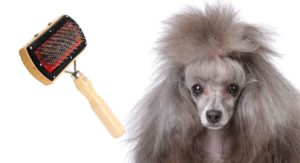
The best brush for Poodles is designed to keep their curly coats tangle free, without damaging their delicate fur. The brush you choose can make
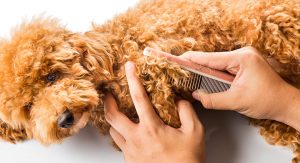
Poodle grooming can seem daunting at first, but with the right instruction and tools for the job, you’ll soon find your feet. For your Poodle’s
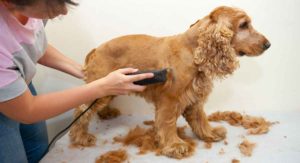
Cocker Spaniel grooming is an important part of their regular care, and needs carrying out at least twice a week to keep their legs and
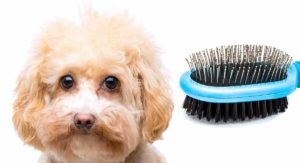
It’s important to get Maltipoo grooming right, because this is one cute pup with one curly coat. They result from one purebred Maltese dog parent
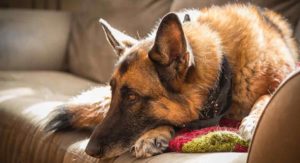
All dogs shed and replace their fur in the same way that people shed and replace their hair. How much fur gets onto your furniture
To read more grooming articles, check out our library of breed specific grooming guides
Recommended: